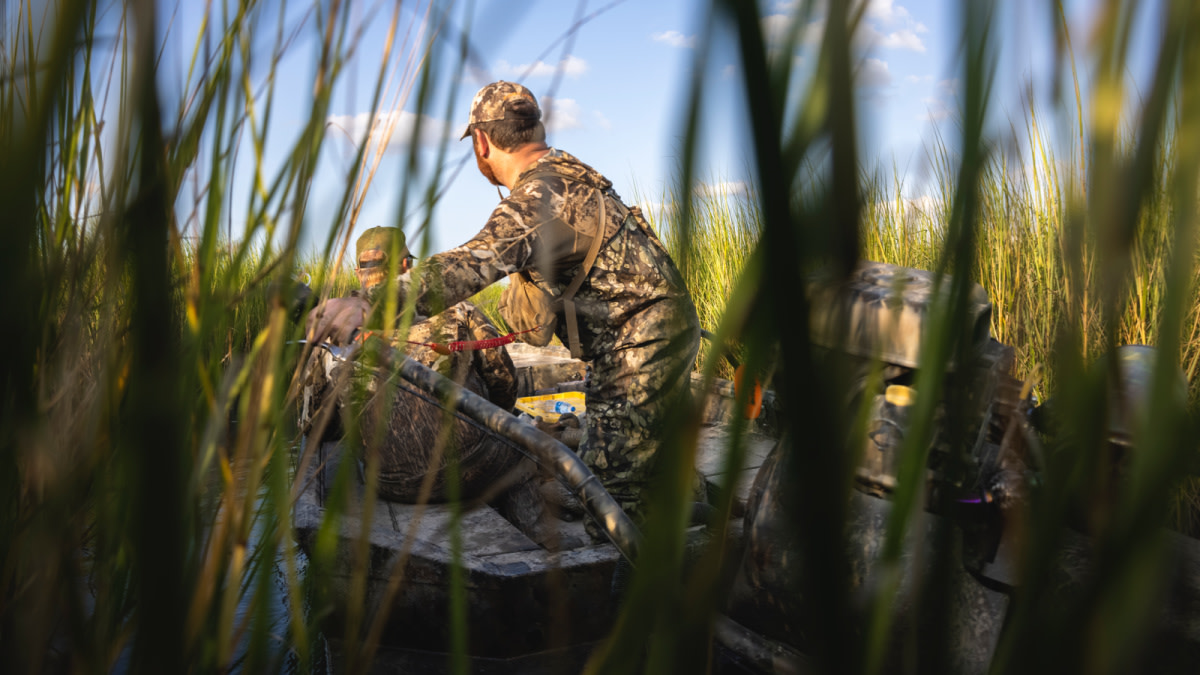
It happens every year and seems to happen more now than ever: A warm spell hits, and there’s just no way to get under the ducks. In fact, November 2020 was the warmest month in 142 years of Earth’s records, and November 2021 was the seventh warmest on record in the United States. These aren’t exactly the weather conditions waterfowlers hope for. But there are still ways to find success, even when the weather is warm and the birds are inactive.
Pattern Birds, then Pattern Them Again When the temperatures get unseasonable, ducks will start some unusual feeding and flying patterns. But when it’s cold and snowy, the birds can enter what we call “survival” mode, and they get very predictable. They spend a lot of time feeding, looking for other birds on food sources, and ultimately are much more willing to decoy. But when it’s unseasonably warm, they are more focused on hunting pressure and they develop patterns that reflect that. For example, the ducks might feed strictly at night, they might only fly from a refuge to private land that doesn’t allow hunting, sit on city ponds and feed in city limits, or just sit on a refuge all day, sleeping where they eat. But these unusual patterns are hard to dial if you’re not out scouting.
Dan Morrison, one of the best duck hunters I know, agrees that you must go the extra mile to know the pattern.
“Most people think of scouting as an evening activity,” Morrison said. “The truth is, ducks can fly any time of the day. When everyone else is headed to do their errands, it could get good. You must do your due diligence morning, noon, and night, especially in the warmer temperatures. It may sound like more work, but it’s a hell of a lot better than having your hunting crew get up, drive out, and setup just for a zero.”
While knowing the birds’ pattern is always helpful and relevant, it can’t be overstated when the weather gets hot.
Scout Spots Far from the Norm This isn’t the first time I’ve brought this up in articles, and it won’t be the last. Beyond just finding birds and food sources, getting away from hunting pressure is one of the most essential parts of being successful on ducks. The less pressured the ducks, the more likely they are to still be active, even during warm spells.
Oklahoma hunting guide Mikal Gowins has focused on this strategy for most of this year’s season.
“It’s been so hot, the big roosts that get a lot of pressure are nocturnal and pretty inactive,” Gowins said. “So we’ve been scouting and hunting ponds with only 50 to 150 ducks, mixed bag ponds, and still shooting limits or close to them. There’s actually a lot of morning flight going on in those areas with fewer hunters.”
The take-home point here applies to most of the season, but it’s even more pronounced when the weather is hot; you don’t need a lot of ducks, you just need the right ducks. Drive farther to find them.
Go Jump-Shooting When all else fails, there’s nothing wrong with jump-shooting small ponds. Frankly, sometimes decoying isn’t a good option, and jumping birds is a ton of fun and the only way to get birds in hand and meat in the freezer. But take note that I said small ponds, and the reason is three-fold.
First and foremost, small ponds tend to offer the best sneaking opportunities, especially if they have a dam. The ducks can’t just gradually swim out of shooting range if they hear rustling, so you usually end up with an all-or-nothing outcome. The second reason is for the easy shooting and retrieval. On smaller ponds, you don’t have to worry about ducks floating into too-deep water, and the wind can also help push them to the bank in short order. Lastly, the smaller the pond, the less likely it is that you’re screwing up an important roost for your own hunting and other hunters.
Dan Morrison and I have both spent time jumping ducks this year when the hunting got slow, but Dan’s experience led to a once in a lifetime outcome.
“I drew a Coues Deer tag in Arizona this year, and after two days of hiking and glassing, I needed a break,” Morrison said. “I decided to check some stock dams for ducks, and the few that had water were full of green-winged teal. I started jumping ponds and shot some teal, and what I thought was a mallard mixed in as well. Turns out it was my first Mexican duck, in one of the prettiest places I’ve ever been. It surprised me and ended up being one of my favorite hunts of the year.”



